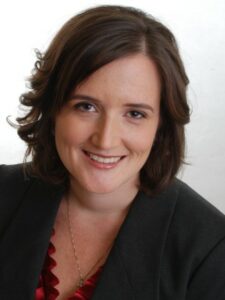Philanthropy’s New Model: Takeaways from the Siemer Institute

The following is a guest post from by Sheri Chaney Jones from SureImpact.
Based in Columbus, Ohio, the Siemer Institute oversees an extensive network of programs and partnerships across the United States to support families with school-aged children at risk of homelessness and empower them on the long road to self-sufficiency.
In 2019, the Siemer Institute identified challenges with grant reporting from their partners and the urgent need for a new data collection, reporting, and assessment approach across their network. As their network expanded, they lacked an efficient way to draw conclusions about the overall impact of their network or understand the factors that contributed to family stability.
The Siemer Institute wasn’t alone in this struggle. It doesn’t matter whether you’re starting a nonprofit or work with a well-established organization: Disconnects between foundations and direct service providers are a regular feature of outdated philanthropic models for social-good organizations across the United States. Ultimately, these communication silos can severely impact longitudinal tracking, grantee capacity, and fundraising.
Recognizing this, the Siemer Institute looked to a new model of philanthropy rooted in the idea of collective social impact, prioritizing collaborative relationships with real-time communication, coordinated strategies, and consistent metrics.
Below, using the Siemer Institute as a model, we’ll address five ways foundations and nonprofits should stay better connected to maximize their impact on their communities.
Before implementing its new impact assessment framework, the Siemer Institute worked with SureImpact to run a pilot program to gather input from partner organizations in their network. After consulting with each pilot cohort, they tailored their outcome measures alongside data collection requirements to align best with individual partners and collective goals.
Before, when the collection of goals were inconsistent, neither the Siemer Institute nor its grantees had a cohesive vision of what success looked like and how to measure it.
But when all partners began to track data according to the same outcomes and outputs, their overall data quality and measurements improved. Moreover, the Siemer Institute was able to cross-compare grantee performance and better understand what interventions were causing the most significant system-wide impact, prioritize those interventions across their network, and adapt their goals accordingly.
Philanthropic Takeaway
Instead of communicating after a program ends, collaboration between stakeholders (e.g., nonprofits, foundations, staff, and community members) should start at the planning stage of a program or activity before it even begins.
When the Siemer Institute changed its collaborative approach to establish shared outcome measures and real-time insights across its network, its team could better understand where its funding was going and how much is needed to achieve desired outcomes.
SureImpact allows the Siemer Institute to more accurately allocate funding to meet the needs of their nonprofit partners to achieve success. Partners now have the insights to develop realistic budgets including the true cost per success.
Over time, as the needs of each organization regularly change, the Siemer Institute can continue to respond proactively with the necessary financial and organizational resources.
Philanthropic Takeaway
When funders and providers aren’t communicating about their budgets, funding often becomes mismatched with the actual needs.
Thus, when attempting to make sound financial stewardship decisions and have the greatest possible impact, foundations of all types should regularly collaborate with their grantees to assess financial needs and develop up-to-date budgets.
One of the major changes made by the Siemer Institute was how it collected and shared data between partners. As part of the shift, they adopted SureImpact’s custom impact management software.
Unlike before, where partners would email the Siemer Institute individual Excel files of their collected data, with the new system, all network members were able to collect, manage, measure, and communicate their social impact in real-time.
As a result, direct service providers now have the technology necessary to quickly enter client information, measure impact, and share de-identified data with both their United Way funding partners and the Siemer Network. The United Way funding partners have dashboards that automatically show the effect of each of their community partners.
With access to impact dashboards, the Siemer Institute has better insight into how individual organizations, United Way Networks, regions, and the entire network perform. SureImpact enables the Siemer Institute to be a better collaborator by using the data to quickly identify potential issues and proactively reach out to their partners to offer support
Philanthropic Takeaway
Real-time reporting effectively allows grantees, funders, and other stakeholders to stay in touch throughout funding cycles and learn valuable lessons about what is working and what needs improvement. In addition, when funders are in touch regularly with grantees, they have more opportunities to provide strategic guidance that builds grantee capacity.
Moreover, collecting and sharing data in real-time impacts learning, strategy, and implementation. Building a continuous feedback loop empowers grantees to tell a meaningful story about their objectives and enables foundations to readily demonstrate to their board and other stakeholders how their grant-making activities support their mission.
As partners across the country adopted the Siemer Institute’s new data collections and reporting standards, the Siemer Institute worked with SureImpact’s Partner Success team to quickly train and onboard staff on how to use the new software and procedures.
Because individual partners and their staff needed to use data daily to drive important decisions, it was crucial for staff to feel comfortable collecting and applying client data. Staff with real-time access to these data points can see what programming works and invest their time and energy into creating the best possible outcomes.
Philanthropic Takeaway
When installing a new philanthropic model, it’s crucial to train staff on how to use it. Make sure you work with partners to develop a consistent data collection and reporting method. As you do this, collect input and adapt to feedback. Not only does this mean that partners will feel comfortable using processes, approaches, and software, but it also helps earn the necessary buy-in from staff and ensures the most accurate results.
Instead of only focusing on outputs (what happened), the Siemer Insitute’s new philanthropic model takes into account measures of network-wide quality (how well activities are done) and outcomes (how clients are better off).
With their collective partner data housed in one place, the Siemer Institute quickly gathered partners’ real-time data and calculated the number of families served, the services they received, and how their stability was impacted. Ultimately, this offered them a more comprehensive understanding of how the network increases family stability.
What they found was impressive! In 2021, more than 13,500 families received services to help them maintain housing, stabilize their children in school, and boost their incomes to a more sustainable level. Most families that engaged with Siemer Institute programs showed significant changes in self-sufficiency from program entry to program exit. Moreover, via this collaborative approach, they were able to identify an important relationship between the number of service hours provided and a family’s housing stability.
Based on these results, the Siemer Institute has since expanded its network to address more communities’ needs across the United States to prevent family homelessness and school instability by providing grant funding, conducting best practices research, and offering training.
Philanthropic Takeaway
Today’s technology makes reporting on key outcomes and impacts easier and more efficient, enabling social-good sector leaders to use a data-driven approach for all of their decision-making.
Select a technology solution that is easy to use and automates the process of collecting multiple types of data. In general, real-time reporting gives direct service providers up-to-date data on their impact, helping them become more competitive in their other funding requests and funders to better understand the impact of their funding. Double the Donation’s guide to corporate sponsorships suggests that data are crucial to showing your impact and gathering sponsorships and grants.
As you may have noticed, throughout the Siemer Institute’s philanthropic model, communication is key. When implementing this approach, focus on areas—from fundraising to impact reporting—where you struggle to stay up-to-date with partners. Then, work together to identify tools, processes, and metrics that help remove even the most minor hurdles to frequent, consistent communication.
Ultimately, by taking this approach, foundations and direct service providers alike can better understand, support, and implement the most impactful interventions and programs to create system-wide social change.
About the Author: Sheri Chaney Jones
For more than 20 years, Sheri Chaney Jones has applied performance management, evaluation, and organization behavior best practices to non-profit organizations and government agencies to improve outcomes and efficiencies. An author, professor, and internationally recognized expert, Sheri believes in data, metrics, and accountability.
Sheri’s foray into entrepreneurship began with Measurement Resources Company in 2010. Now a national firm, Measurement Resources increases the capacity of non-profit and government sector organizations through high-performance practices and data-driven insights. In 2018, Sheri launched SureImpact to automate and simplify the process of collecting and sharing outcomes and impact data.
Sheri is a thought leader on public sector evaluation and applied organizational research. She is the author of Impact & Excellence: Data-Driven Strategies for Aligning Mission, Culture, and Performance in Nonprofit and Government Organizations (Jossey Bass, 2014). Sheri is passionate about women’s equity and the advancement of girls. She is the Columbus Chapter President of the National Association of Women Business Owners and a Commissioner for the Columbus Women’s Commission for the Mayor’s Office. Sheri holds a Master of Arts degree in Industrial and Organizational Psychology from Central Michigan University and a Bachelor of Science in Psychology from The Ohio State University. Sheri, her husband Matt and their four children live in Columbus, Ohio.
who subscribe to our free, email newsletter. It’s information that will empower your nonprofit!

